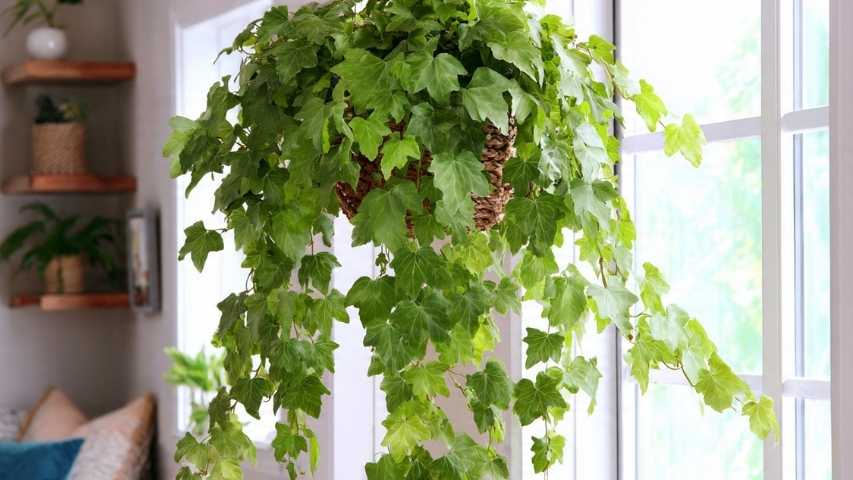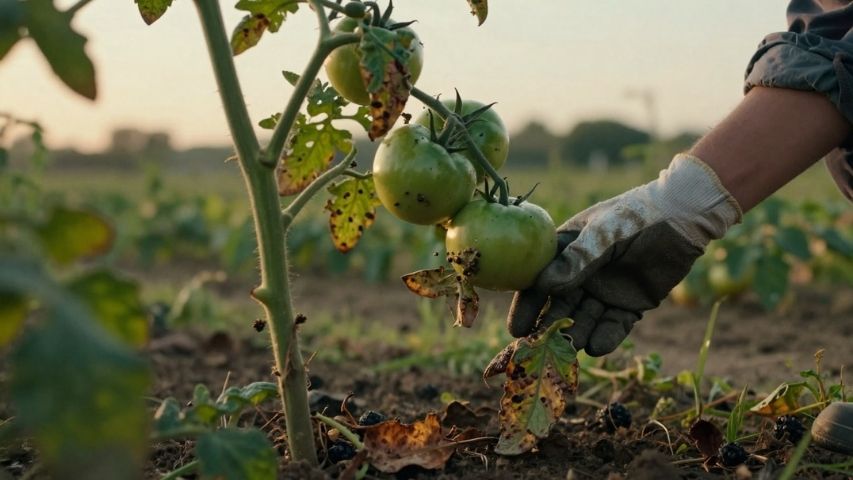Grape ivy is a reliable choice for both beginners and experienced gardeners. Its attractive leaves bring a tropical feel to any room, whether trailing from a hanging basket or climbing a trellis. This plant is easy to care for and looks great.
If you want a flexible and easy houseplant, grape ivy is a great pick. This guide covers planting, care, and how to solve common issues. By the end, you’ll know how to grow a healthy grape ivy that brightens your home for years.
Where to Plant Grape Ivy
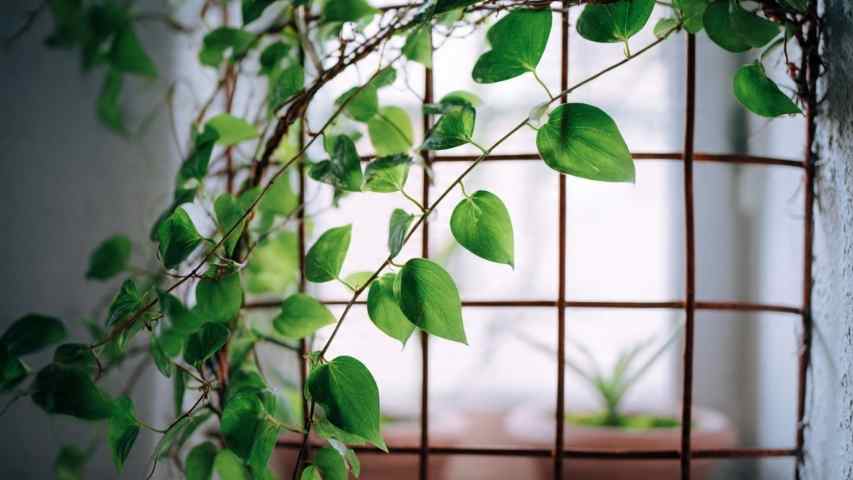
Grape ivy grows well indoors in a pot or hanging basket. Place it near an east-facing window with bright, indirect light, away from strong midday sun. Since it likes to climb, add a trellis to help guide its growth and keep it off your furniture.
While primarily grown as a houseplant, grape ivy can be moved outdoors during the summer in USDA Hardiness Zones 10 and 11. (Venezuela treebine Cissus alata, n.d.) If you place it outside, find a location with dappled shade. It’s crucial to bring the plant back inside before temperatures drop in the fall, as it cannot tolerate the cold.
How to Plant and Care for Grape Ivy
Grape ivy doesn’t need much care, but starting it off in the right conditions helps it grow well.
When to Plant
The best time to plant or repot grape ivy is in spring. This way, it has the whole growing season to settle into its new home.
Light Requirements
Grape ivy is adaptable, but it performs best in bright, indirect light. It can tolerate lower light conditions, but its growth may be slower. Avoid exposing it to long periods of direct, harsh sunlight, which can scorch its leaves. A spot with dappled sunlight or partial shade is perfect.
Soil and Water
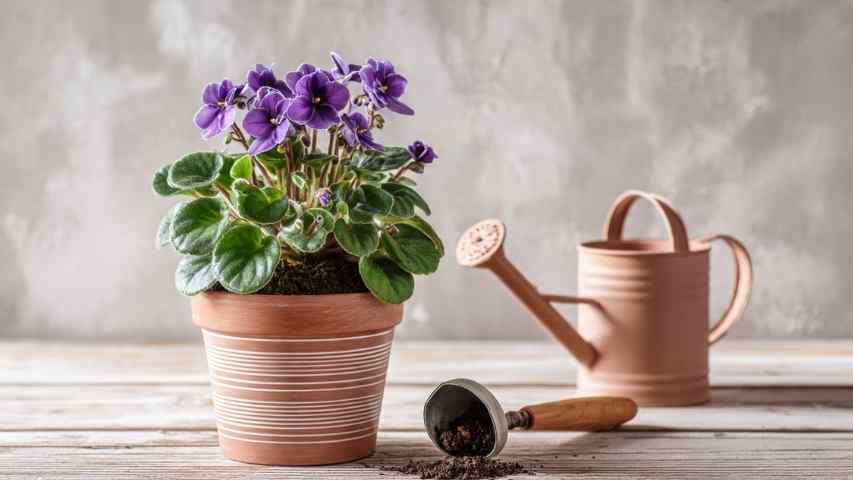
This plant prefers a well-draining, aerated potting mix. You can create your own by mixing peat moss, bark, and perlite, or purchase a commercial potting soil formulated for African violets, which offers a similar lightweight and porous structure.
Let the soil dry out a bit between waterings. Water only when the top inch feels dry. When you do water, soak the soil until water runs out the drainage holes, and empty any water from the saucer. Too much water can make the plant lose leaves. In winter, water less often.
Temperature and Humidity
Grape ivy is comfortable in average household temperatures, ideally between 68°F and 82°F. It’s important to keep the plant in a spot where temperatures don’t fall below 50°F, even at night. (How to Care for Cissus rhombifolia (Grape Ivy), n.d.)
Grape ivy likes moderate humidity. If your home is dry, especially in winter, the leaf tips might turn brown. Using a humidifier or placing the plant near others can help add moisture to the air.
Fertilizer
You don’t have to fertilise grape ivy, but it can help the plant grow faster and stronger. If you decide to use fertiliser, pick an all-purpose houseplant type and use it in spring and summer. Follow the label instructions to avoid using too much.
Pruning
Pruning grape ivy regularly keeps it looking full and bushy. Pinch off the tips now and then to help it branch out. If the vines get too long, just trim them back to the length you want.
If your grape ivy starts to look thin or leggy, cut the stems back to just above the soil. A healthy plant will soon grow new shoots.
Potting and Repotting
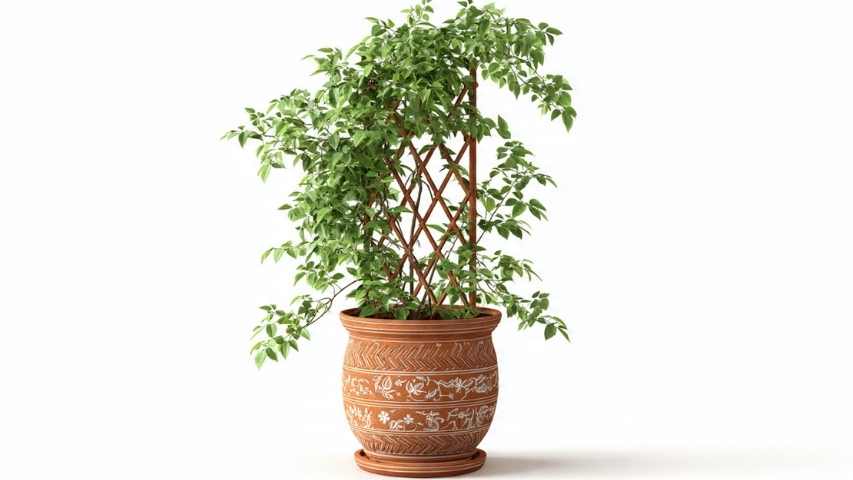
Choose a pot that is roughly twice the size of the plant’s root system. This gives it ample space to grow for a couple of years before needing to be repotted. Ensure the pot has large drainage holes. If you plan to use a trellis, a heavier pot made of terra-cotta is a good choice to prevent it from tipping over as the plant grows taller.
Grape ivy is a moderately fast grower and typically needs repotting every two years. (How to Care for Cissus rhombifolia (Grape Ivy), n.d.) When it’s time to repot, select a container that is one size larger and use fresh potting mix.
Propagating Grape Ivy
It’s easy to make new grape ivy plants. The best time to take stem cuttings for propagation is in spring.
- Take a cutting: Snip a section of stem that has two to three leaf nodes below the top growth bud.
- Use rooting hormone: Dip the cut end of the stem into rooting hormone powder. This step is optional, but it can speed up the rooting process.
- Plant the cutting: Insert the cut end into a small pot filled with damp potting mix.
- Provide warmth and moisture: Place the pot in a warm spot away from direct sunlight and keep the soil consistently moist.
- Watch for new leaves to appear. That means the cutting has rooted. When the new plant is growing well, move it to a bigger pot.
Common Pests and Problems
Grape ivy can get pests like spider mites, scale, and mealybugs. If you see these bugs, use insecticidal soap or neem oil and follow the directions on the product.
Common Grape Ivy Questions
Is grape ivy toxic to pets?
Grape ivy (Cissus rhombifolia) is considered non-toxic to cats and dogs. (Grape Ivy, n.d.) However, it’s always a good practice to prevent pets from chewing on houseplants.
Why are my grape ivy leaves turning yellow?
Yellow leaves are often a sign of overwatering. Ensure the soil has a chance to dry out between waterings and that the pot has adequate drainage. It can also indicate a nutrient deficiency, so a balanced fertiliser during the growing season might help.
What are some popular types of grape ivy?
There are several popular types of grape ivy. ‘Ellen Danica’ or Oakleaf Grape Ivy has deeply cut leaves. ‘Mandiana’ is smaller and stands upright, making it good for trellises. Wax Grape Ivy (Cissus rotundifolia) has round, shiny leaves and looks a bit like a succulent. (Grape Ivy Production Guide, n.d.)
A Versatile and Rewarding Plant
Grape ivy’s trailing vines and easy care make it a great choice for any indoor garden. With the right light, water, and attention, you can enjoy this plant for years. Its flexibility and easy propagation make it perfect for anyone wanting more green in their home.







